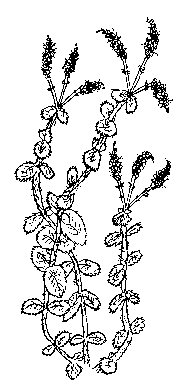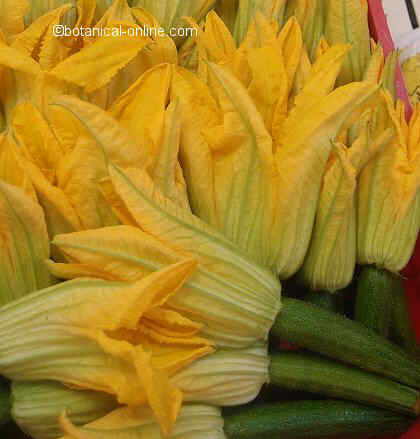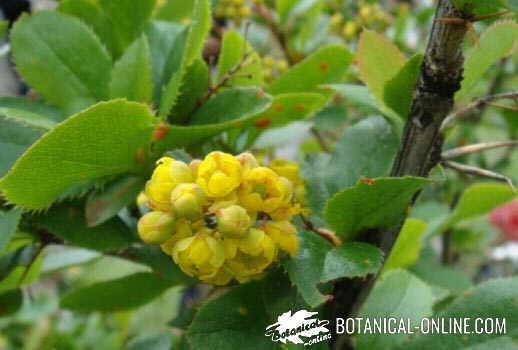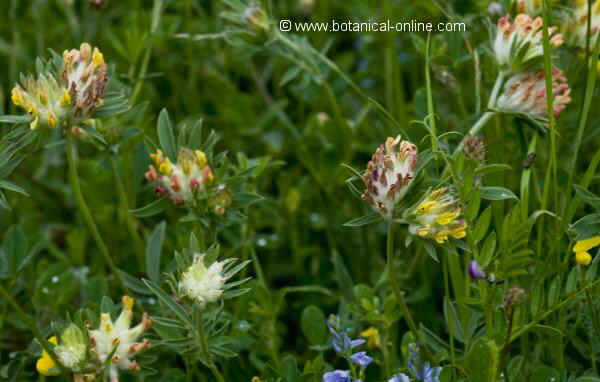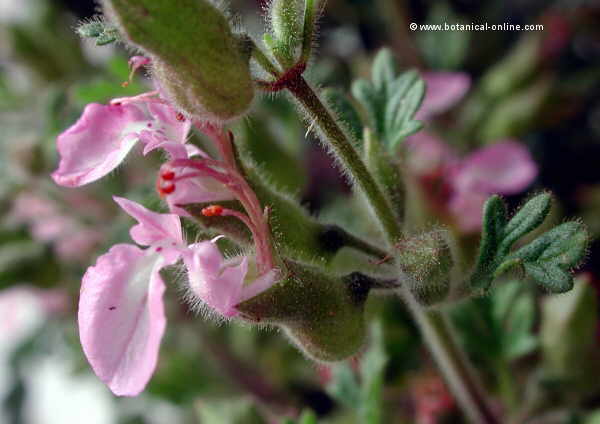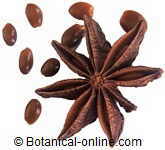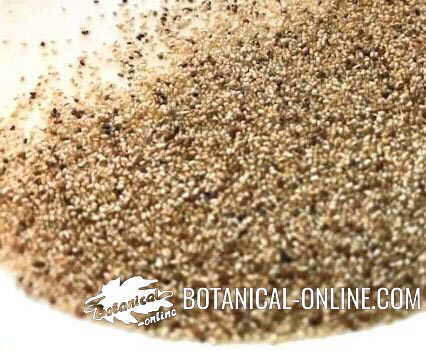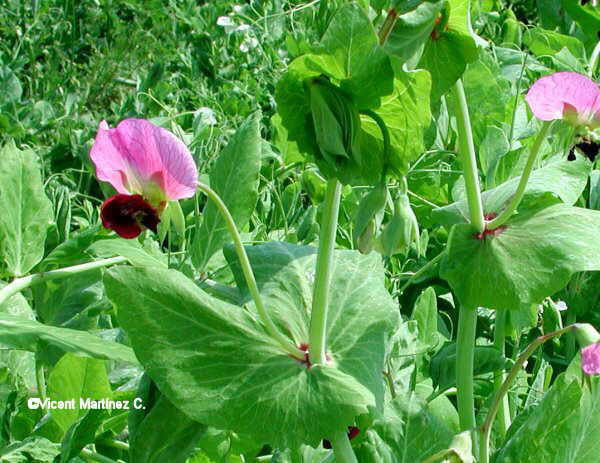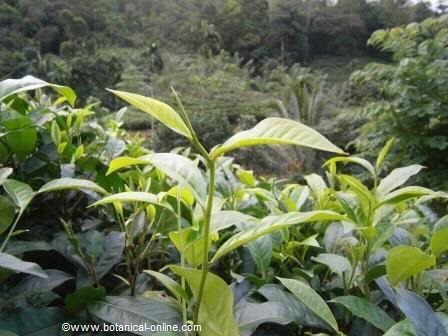Contents
Health benefits of mint
Characteristics of mint (Mentha X rotundifolia (L.) Huds.)
A detail of the plant |
Common noun: Mint, apple mint, pineapple mint, bigleaf mint, round-leafed mint, woolly mint
Scientific noun: Mentha X rotundifolia (L.) Huds.
Family. Sage family – Lamiaceae
Habitat: Near the rivers, ponds and some other humid places.
Description of mint
It is a herb from 30 to 100 cm. Oval wrinkled leaves with very short stalks or more frequently stalkless; white and hairy beneath. Flowers gathered into spikes from 2 to 5 cm long. Sometimes lacking in continuity at its base.The corolla is light purple or almost white showing a tubular calyx with five triangular teeth.
Stamens go out considerably, which may be a distinctive feature to distinguish this plant from others. But it is its strong and unpleasant smell what makes it different from other mints.This fact prevents it from being so well considered as those other species with better smell. Moreover this is the reason why the best scented species are specially suitable for cooking or cosmetics, whereas the one studied here is only intended to medicinal use.
Picking and storing: We must collect it during the bloom season in summer, keeping it in hermetic containers in dry and dark places.

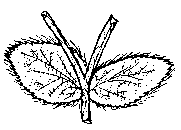
A detail of leaves and flowers
PROPERTIES OF MINT
Medicinal properties of mint
Internal use
– Stomachic, hepatic, carminative: A good remedy for indigestion. Take a tisane with the infusion of dry leaves.Just after having boiled the water, leave them rest for a while and take as soon as you can. You can sweeten it with sugar or honey.
Mint can protect and unswollen the liver and to help this organ to accomplish its metabolic functions. Very useful for cirrhosis. (Infusion of a spoonful of dried herb per cup of water. Take a couple of glasses a day)
– Antiflatulence: Its content in carvacrol, thymol and menthol help expel the excessive gas in the intestines, (infusion of 1 tablespoon of dried leaves or 2 tablespoons of fresh leaves in one liter of water. Take a couple of hot cups a day after meals)
– Bad breath: It counteracts the exhalation of malodorous products of some plants, like garlic and onion. (infusion of one teaspoon of dried plant per cup of water. Take two glasses per day)
– Diarrhea: (Infusion of the dried plant)
– Diverticulitis or diverticulosis: Mints are carminative plants that can be soothing and useful in this case. (Infusion of a spoonful of dried plant per cup of water. Take two glasses per day)
– Sedative: Mint, like peppermint, is used to calm the heart palpitations. You can drink hot water with a few drops of its essence. (It is not too common, however, to find this variety of essences of mint in pharmacies or herbalists’.) (The same treatment can be used similarly to alleviate the psychosomatic effects of depression or to treat insomnia
– Respiratory tract: This is also useful for pharyngitis or sore throat treatment. (Gargles with the liquid from the decoction of 30 g of dried plant per liter of water). For bronchitis or cough (10 minute infusion of a spoonful of the dried plant. Drink a couple of glasses a day). Mint is a good febrifuge, able to reduce fever (Infusion of a spoonful of dried plant. Take a couple of cups a day)
– Kidney stones or gallstones: Any variety of mint possesses soothing properties, very useful for reducing pain caused by an acute colic. (Infusion of the dry leaves)
– Headache, backache or neck pain: Very useful to solve back pains or cervical pain (Infusion of a spoonful of flowering tops per cup of water. Take a couple of cups a day) (In external use, apply a compress soaked with the decoction of leaves and flowers on the affected zone) (poultice of leaves soaked in hot water to be applied directly over the painful area.)
Very useful to cure headaches that have their origin in a digestive problem (Infusion of a spoonful of flowering tops per cup of water. Take a couple of cups a day).(Apply a compress soaked with the decoction of leaves and flowers on the head.)
– Febrifuge: An infusion made with the leaves increases perspiration and makes fever go down. Mints are very rich in menthol, a component with anticongestive and diaphoretic properties. It increases the production of sweat and relieves congestion of the respiratory channels. These properties have been exploited in the treatment of cold and flu because they are able to reduce fever by means of body sweat evaporation. (10 minutes infusion of a spoonful of the dry plant. Drink two glasses a day)
– Relaxing: To stop palpitations you can drink a glass of hot water with some drops of its essence (It is not very usual, however, to find essence of this variety of mint in chemist’s or herbalist’ s.)
– Cataracts: The antioxidant properties of mints can prevent the onset of cataracts (Infusion of a spoonful of dried plant. Take a couple of cups a day)
– Altitude sickness: It contains rosmarinic acid and eugenol with anticoagulant properties that may help improve blood circulation. (Infusion of a spoonful of dried plant per cup of water. Take a couple of cups a day a couple of days before leaving for the mountain or climbing) Furthermore, an infusion of one teaspoon of dried leaves of mint per cup of cold water is very suitable to reduce the temperature and restore fluids lost by the heat.
External use
In external use, you can apply a compress soaked with the boiling of leaves and flowers over the part of the body suffering from rheumatic aches. It can also be applied in case of insect stings. Mixed with olive oil into equal parts, it can be used for burns.
To alleviate arthritis dilute a few drops of mint oil in alcohol. Wet a compress and apply it on the the affected joint. It can also be very useful to apply a poultice of mint leaves soaked in hot water directly over the painful area)
– Muscular distensions: For muscular pain, such as muscular distensions, apply a compress soaked in the decoction of leaves and flowers on the painful muscle. (A poultice of leaves soaked in hot water can also be applied directly on the painful area)
– Insect bites or stings: (Infusion of the dried plant. Apply to the affected area)
– Eczema: (Wash the affected area with the liquid from the infusion of the dried plant.)
– Lice: Mints can be used to diminish lice itching and avoid lice approaching. (scrub of the young plant above the skin to ward off fleas.)
– Hair care: Mint can be used to prepare natural shampoos.
– Tinnitus or otitis: Because of its bactericidal properties, it is particularly appropriate for otitis and ringing in the ear, especially when tinnitus responds to an infection in the middle ear. (Carefully provide a couple of drops of diluted oil of these plants inside the ear with a piece of cotton)
– Pyorrhea: (Mouthwashes with the infusion of dry leaves.)
– Vaginitis: (Wash the affected area with the resulting liquid of the infusion of the dry plant.)
Contraindications and toxicity of Mint
Mint leaves, used in therapeutic doses, have no toxicity. However, it should not be used with people with hiatal hernia, or problems caused by acid reflux. The ability of this herb to relax the esophageal valve can worsen heartburn. Nor should this plant be used if the person is affected with gallbladder stones.
It is also unsuitable for small children whom it can cause adverse reactions. It may cause abortion to pregnant women and its intake by breastfeeding women may affect the baby. This herb must be only taken in the last cases under medical recommendation.
People suffering from liver diseases should abstain taking mint essential oil preparations. All the same for people with some intestine disorders, such as ulcerative colitis, Crohn’s disease or irritable bowel syndrome. It is neither recommended for patients who suffer from neurological diseases, such as Parkinson’s disease.
PROPERTIES AND CAUTIONS WITH MENTHOL
Mint essential oil, rich in menthol, used pure, is toxic and can be fatal to an adult with a single dose of a teaspoon. This oil should be diluted so it can be used. In no case it should be supplied, even diluted, to people to whom is not recommended, as we have seen before.
The essential oil can dramatically lower blood pressure in young children leading to cardiac depression and therefore it is not suitable for children, even used topically as an ointment or aspirated through the nose. By inhaling the vapors of menthol, the children can suffer suffocation by spasm of the larynx.
Internal use of essential oil can cause convulsions or cramps. Even diluted, mint oils, applied internally may cause sleep problems or nervousness. Used diluted externally on the skin can cause eczema, redness, blisters, headaches, by means of skin absorption. If there is any adverse reaction, it should no longer be applied.
Although mint leaves, used in therapeutic amounts, have no toxicity, children should not take herbal teas made with mint leaves.
*More information about menthol
![]() More information about medicinal plants.
More information about medicinal plants.

